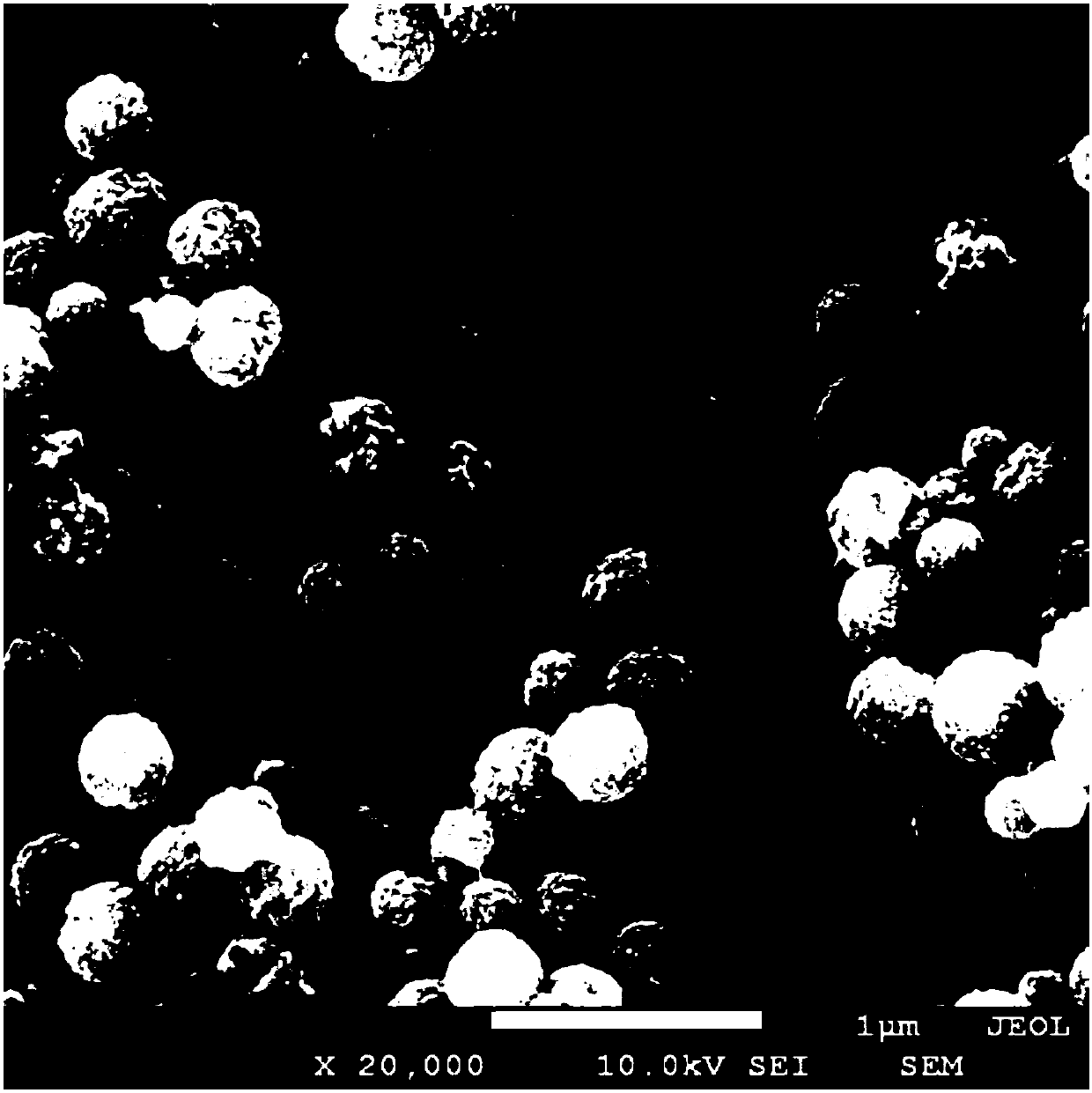Preparation method of gene tracing and anti-counterfeit nanoparticles based on DNA and nanoparticles
A nanoparticle and gene technology, applied in the field of preparation of new composite nano-DNA materials, can solve the problems of large detection error, large dosage, limited controllable information, etc., and achieve the effect of good DNA stability and high measurement accuracy
- Summary
- Abstract
- Description
- Claims
- Application Information
AI Technical Summary
Problems solved by technology
Method used
Image
Examples
Embodiment 1
[0041] 1) Add 2g Fe 3 o 4 Nanoparticles were dispersed into 500mL of mixed solvent with alcohol-water ratio of 5:1;
[0042] 2) Add 10 mL of 50% TMAPS (in methanol) under stirring condition, and wash with ethanol for 3 times after reacting for 8 hours;
[0043] 3) redispersing the obtained nanoparticles into water, adding DNA of a specific sequence, the DNA is a DNA gene fragment longer than 20 base pairs, stirring and reacting for 8 hours, separating and washing to obtain surface DNA-modified nanoparticles;
[0044] 4) Disperse the nanoparticles loaded with DNA in 95% ethanol;
[0045] 5) Add TMAPS and TOES to generate SiO on the surface of nanoparticles 2 layer that protects DNA. SiO 2 The thickness of the layer can be tuned by changing the amount of TMAPS and TEOS.
[0046] The resulting gene tracer and anti-counterfeiting nanoparticles such as figure 1 shown.
Embodiment 2
[0048] 1) Add 2g of Cr 2 o 3 Nanoparticles were dispersed into 500mL of mixed solvent with alcohol-water ratio of 5:1;
[0049] 2) Add 10 mL of 50% TMAPS (in methanol) under stirring condition, and wash with ethanol for 3 times after reacting for 8 hours;
[0050] 3) redispersing the obtained nanoparticles into water, adding DNA of a specific sequence, the DNA is a DNA gene fragment longer than 20 base pairs, stirring and reacting for 8 hours, separating and washing to obtain surface DNA-modified nanoparticles;
[0051] 4) Disperse the nanoparticles loaded with DNA in 95% ethanol;
[0052] 5) Add TMAPS and TOES to generate SiO on the surface of nanoparticles 2 layer that protects DNA. SiO 2 The thickness of the layer can be tuned by changing the amount of TMAPS and TEOS.
[0053] The resulting gene tracer and anti-counterfeiting nanoparticles such as figure 2 shown.
Embodiment 3
[0055] 1) Add 2g of CaCO 3 Nanoparticles were dispersed into 500mL of mixed solvent with alcohol-water ratio of 5:1;
[0056] 2) Add 10 mL of 50% TMAPS (in methanol) under stirring condition, and wash with ethanol for 3 times after reacting for 8 hours;
[0057] 3) redispersing the obtained nanoparticles into water, adding DNA of a specific sequence, the DNA is a DNA gene fragment longer than 20 base pairs, stirring and reacting for 8 hours, separating and washing to obtain surface DNA-modified nanoparticles;
[0058] 4) Disperse the nanoparticles loaded with DNA in 95% ethanol;
[0059] 5) Add TMAPS and TOES to generate SiO on the surface of nanoparticles 2 layer that protects DNA. SiO 2 The thickness of the layer can be tuned by changing the amount of TMAPS and TEOS.
[0060] The resulting genetic tracer and anti-counterfeiting nanoparticles such as image 3 shown.
[0061] Of course, you can also use C, Fe 2 o 3 、TiO 2 , ZnO, CdS, ZnS, MoS 2 、WS 2 Nanoparticles ...
PUM
 Login to View More
Login to View More Abstract
Description
Claims
Application Information
 Login to View More
Login to View More - R&D Engineer
- R&D Manager
- IP Professional
- Industry Leading Data Capabilities
- Powerful AI technology
- Patent DNA Extraction
Browse by: Latest US Patents, China's latest patents, Technical Efficacy Thesaurus, Application Domain, Technology Topic, Popular Technical Reports.
© 2024 PatSnap. All rights reserved.Legal|Privacy policy|Modern Slavery Act Transparency Statement|Sitemap|About US| Contact US: help@patsnap.com










